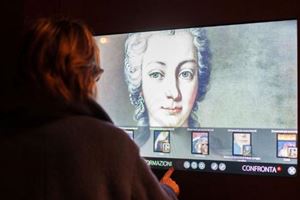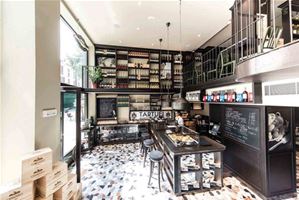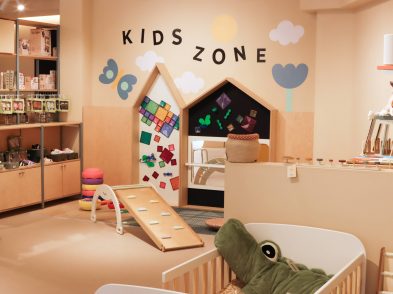A freelance photographer based in Milan, Dave Yoder has an ambitious fund-raising goal for an equally ambitious project: raising over 250,000 U.S. dollars to build a super high-tech camera that can ‘see’ Leonardo da Vinci’s fabled painting The Battle of Anghiari in Florence’s Palazzo Vecchio. Depicting the famous battle, in its time the painting was heralded as the greatest masterwork by the era’s greatest master. Historical documents suggest it was visible for some 40 years, a period in which two generations of artists flocked to Florence to study the immense, unfinished mural said to be the ‘school of the world.’ Many of these artists were so taken with its expressive force that they copied it. In 1563, it was allegedly covered up when another Renaissance master, Giorgio Vasari, produced (and completed) the larger mural that still decorates one wall of Palazzo Vecchio’s Salone dei Cinquecento. Some art historians posit that the words Cerca Trova in Vasari’s painting were left as a clue to the place where he sealed in Leonardo’s work. Researchers from around the world have argued the painting’s existence and, led by Dr. Maurizio Seracini (see an interview with Dr. Seracini in TF 43), have followed the decades-long search to find the masterpiece. Yoder may have finally found a way to prove its existence, but he needs the world’s help. Below he tells TF why.
How does a freelance photographer from Indiana get involved in finding one of the greatest Renaissance masterworks of all time?
Years ago, I saw a small press article on Dr. Maurizio Seracini. Then, about four years ago, I pitched the story to National Geographic magazine, and they eagerly accepted it. Then the whole National Geographic Society (NGS) became involved, including TV. NGS supports hundreds of missions a year, and this one particularly caught its interest.
A team of international scientists, led by Dr. Seracini, has been looking for the fabled fresco for decades. One of the major obstacles is, of course, the 12-centimetre-thick wall decorated with murals by Giorgio Vasari. Clearly, damaging the Vasari mural is out of the question. What kind of technology have they used so far and why has it not been enough to prove the fresco’s existence? You, however, have found a solution by uniting photography and nuclear physics.
I cannot take credit for finding the solution or technology-it has always been a team effort: if the painting is found, it will have been through the combined work of several people over many years, foremost among them Dr. Seracini. At the very most, I will have helped in the effort, but there are a number of scientists who will be far more deserving of recognition and credit for discovery of the painting. Much was owed to luck in finding Dr. Smither and the gamma camera technology, which has shown in tests to be the best bet for finding the painting. There are also two other pieces of technology being held in reserve in case the gamma camera technology does not work. I believe all of Dr. Seracini’s 35 years of work has led to this day, when we finally have the means to solve the mystery, and that before now there had been no expectation of being able to detect the painting. I should mention that The Battle of Anghiari was not a fresco: it was a painting done on the wall in oils. If it had been a fresco, we would not be able to use gamma-ray technology to find it.
What will the gamma ray camera do and how can it definitively prove the painting’s existence?
A small particle accelerator will be used to activate the wall with neutrons. At the levels we will use, this will be a very safe, strictly controlled procedure. If there are paint pigments behind the wall, the metals in the pigments will emit gamma rays that can be detected and measured.
Our tests at the ENEA facility in Frascati showed that this technique will almost certainly work. The gamma rays from the paint samples we tested passed through original bricks from the Palazzo Vecchio in sufficient numbers to be detected. The pigments have metals, and once we have evidence of gamma rays that can be linked to pigments, we will build a special lens out of copper crystals which will be used in the gamma camera to map a rough image of parts, or all, of the surviving painting.
The gamma camera will measure a large number of gamma rays from a small point, about 1cm in size. Considering it was a large painting, this should be sufficient to do some imaging. Since we know what the painting looked like from numerous copies, if we can image part of the real painting and it resembles the copies, it would be hard for anyone to argue that it is anything other than the original painting.
Why do you need the gamma technology by February 2012?
We believe that is when we will most likely have an opportunity to work in the Salone dei Cinquecento, but nothing official has been announced.
National Geographic Society is funding the project, so why are you raising funds through Kickstarter?
National Geographic has already invested a lot of money into this project and will continue to fund it, but it cannot fund the total project costs. We need about 266,500 U.S. dollars at this stage to advance the gamma-camera technology. This is my part of the project, so I proposed trying a crowd-funding effort. The Kickstarter campaign is just one of my attempts to help with the fund-raising. There are other ongoing efforts to raise money for the project, too.
How will the donated funds be used? What’s the pledge deadline?
Kickstarter is an all-or-nothing fund-raising platform: if the campaign does not reach its goal, none of the pledges will be collected. If the Kickstarter campaign is successful, the funds will be used for my part of the project-the gamma camera components, testing and other expenses. The deadline is October 10, 2011.
Anyone can get involved in the quest by donating as little as 1 euro. What do donors get in return for their pledges?
There are tiered pledge rewards through Kickstarter, so it depends on how much the person pledges. There are other ways to be involved. It would be fantastic if visiting students were to get involved in the fund-raising or the project itself. I would welcome contact from any student groups who would like to help.
After joining Dr. Seracini in the search four years ago, how sure are you today of the painting’s existence?
I believe it is there, or at least part of it. I cannot be sure, but in my mind, there are too many coincidences surrounding that part of the wall for the best explanation to be coincidence. But that’s why we want to explore with non-invasive technology-because we can’t be sure, and it makes no sense to damage the Vasari frescos when we don’t have to.
You may be the first photographer to capture an image of this long-lost painting. How would that feel?
I don’t think that far ahead. One step at a time: there are too many unknowns to be so presumptuous. If that were to happen, though, I imagine I’d feel a measure of satisfaction that it worked and was worth the effort.
EVERY EURO COUNTS
Dave Yoder needs your support to find the Leonardo painting. If you are a fan of Leonardo, go to Dave’s Kickstarter page (http://tinyurl.com/lostleo) and pledge or help publicize the event.
TAKE A LOOK FOR YOURSELF OR GET INVOLVED WITH THE PROJECT
See Dave’s photographs of the Leonardo search on his website, www.daveyoder.com.
Follow Dave as he chronicles the campaign and his gamma technology research: see http://daveyoder.com/search4davinci/; on Twitter, go to @Search4DaVinci; and on Facebook at www.facebook.com/Search4DaVinci.
WANT TO KNOW MORE ABOUT THE LOST LEONARDO?
Read Rab Hatfield’s Finding Leonardo: The Case for Recovering ‘The Battle of Anghiari’, published by TF Press. Hatfield, a professor at Syracuse University in Florence, writes for the general reader; using historical documents as varied as records of Leonardo’s purchase of supplies and his private notes about the project to identify the mural’s possible location, posit its probable size and context, comment on the possible existence of other work, and explore the complex issues of the painting’s state and the viability of its recovery. Order the book through www.theflorentinepress.com or your local bookseller.







